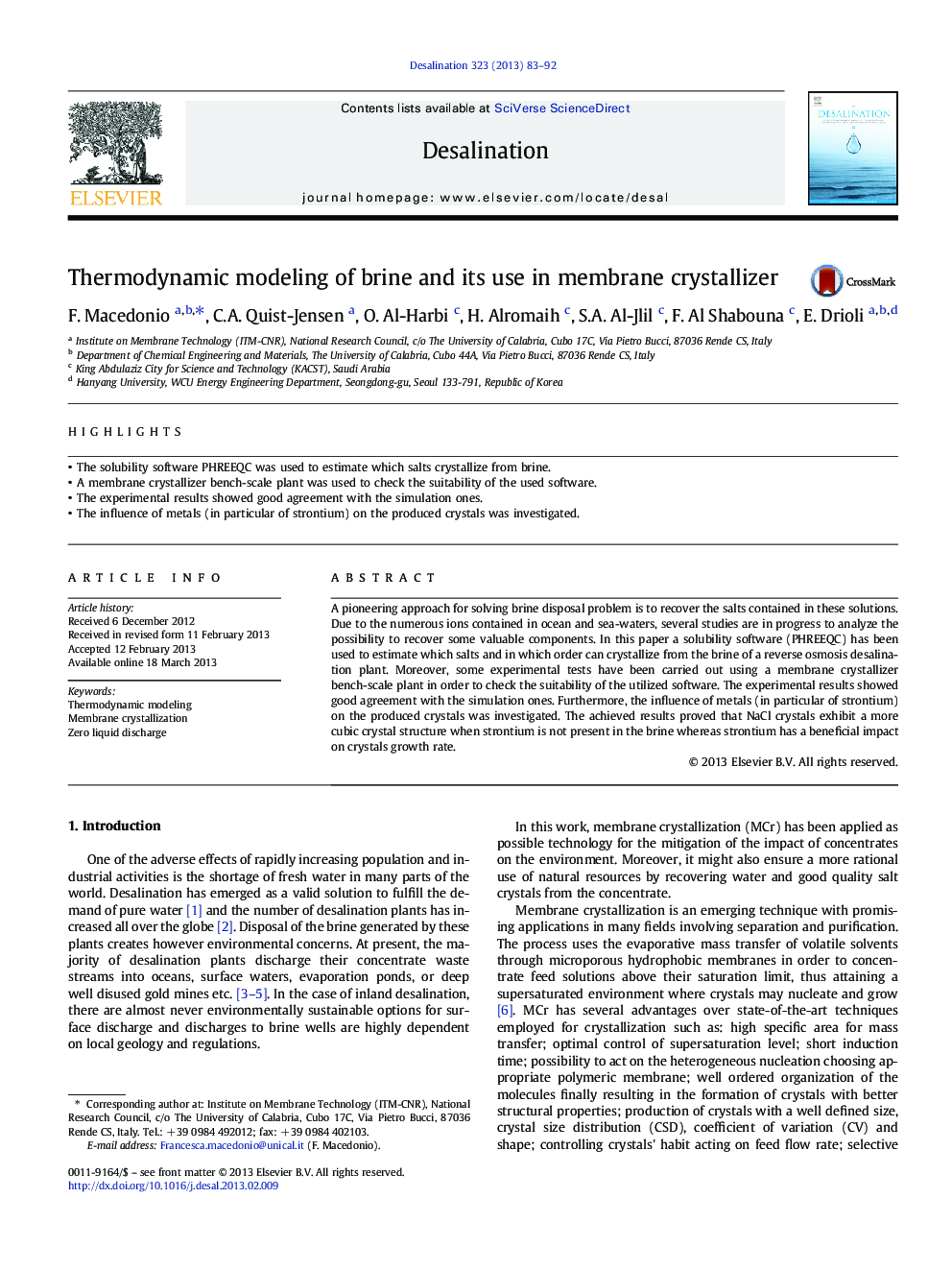| Article ID | Journal | Published Year | Pages | File Type |
|---|---|---|---|---|
| 623780 | Desalination | 2013 | 10 Pages |
•The solubility software PHREEQC was used to estimate which salts crystallize from brine.•A membrane crystallizer bench-scale plant was used to check the suitability of the used software.•The experimental results showed good agreement with the simulation ones.•The influence of metals (in particular of strontium) on the produced crystals was investigated.
A pioneering approach for solving brine disposal problem is to recover the salts contained in these solutions. Due to the numerous ions contained in ocean and sea-waters, several studies are in progress to analyze the possibility to recover some valuable components. In this paper a solubility software (PHREEQC) has been used to estimate which salts and in which order can crystallize from the brine of a reverse osmosis desalination plant. Moreover, some experimental tests have been carried out using a membrane crystallizer bench-scale plant in order to check the suitability of the utilized software. The experimental results showed good agreement with the simulation ones. Furthermore, the influence of metals (in particular of strontium) on the produced crystals was investigated. The achieved results proved that NaCl crystals exhibit a more cubic crystal structure when strontium is not present in the brine whereas strontium has a beneficial impact on crystals growth rate.
